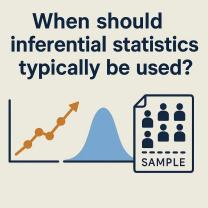What is the GCSE Computer Science scheme of work?
The GCSE Computer Science scheme of work is a structured plan or curriculum overview designed to guide the teaching and learning of computer science at the General Certificate of Secondary Education (GCSE) level in the United Kingdom. GCSEs are a set of standardized examinations typically taken by students in England, Wales, and Northern Ireland at the end of their secondary education (usually around age 16). The Computer Science GCSE focuses on introducing students to fundamental concepts in computing, programming, and computational thinking.
Here's an overview of what the GCSE Computer Science scheme of work typically includes:
Curriculum Content: The scheme of work outlines the topics and content areas that students will study during their GCSE Computer Science course. This often aligns with the official curriculum and exam specifications provided by the examination boards (e.g., AQA, OCR, Edexcel).
Teaching Sequencing: It provides a detailed plan of the order in which topics will be taught throughout the course. This sequencing is designed to build students' knowledge progressively, starting with foundational concepts and moving toward more advanced topics.
Lesson Plans: For each topic or unit, the scheme of work may include suggested lesson plans, teaching resources, and activities. This helps teachers plan their day-to-day lessons effectively.
Assessment: It outlines how students will be assessed, including the types of assessments (e.g., exams, coursework, practical projects), their weight in the final grade, and the assessment criteria.
Learning Objectives: The scheme of work typically specifies the learning objectives or outcomes for each topic or unit. These objectives describe what students should know and be able to do after completing the course.
Resources: It may suggest textbooks, online resources, software tools, and other materials that can aid in teaching and learning.
Programming Languages: If applicable, it may specify the programming languages or environments that will be used during the course. Commonly taught languages include Python, Java, or Scratch.
Practical Work: It outlines the practical and hands-on components of the course. Computer Science courses often include programming assignments, projects, and coding exercises.
Ethical and Legal Considerations: The scheme of work may address ethical and legal considerations related to computer science, such as data privacy, cybersecurity, and responsible computing.
Extension and Enrichment Activities: Some schemes of work include suggestions for extension activities or opportunities for students to deepen their understanding and skills beyond the core curriculum.
Inclusion and Accessibility: It may include guidance on how to accommodate students with different learning needs and ensure inclusivity in the classroom.
Teacher Training and Support: The scheme of work may provide resources or recommendations for teacher training and professional development to help educators effectively deliver the curriculum.
Updates and Revisions: The scheme of work may note any updates or revisions to the curriculum, ensuring that teachers have the most current information.
GCSE Computer Science courses aim to develop students' computational thinking, problem-solving, and programming skills, as well as their understanding of key concepts in computing. The scheme of work serves as a valuable tool for both teachers and students to navigate the course and meet the requirements of the GCSE Computer Science examination. It helps ensure consistency in curriculum delivery across different schools and provides a structured framework for teaching and learning in this subject.













